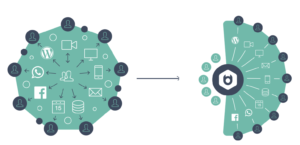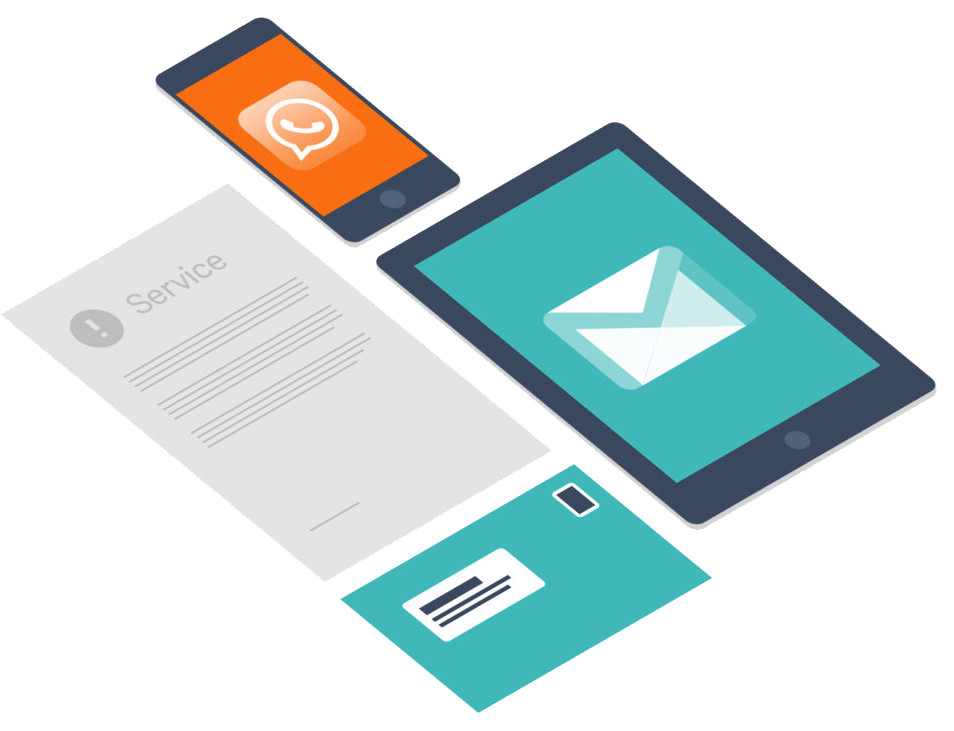Successful e-mail marketing campaign management: an approach that works
- A campaign-based approach helps marketers to structure work, make plans and measure results.
- A central place for marketing plans and briefings enables marketing teams to work together more efficiently.
- By automating selections based on rules, it is possible to save campaign management costs.
Why campaign management is essential for successful marketing teams
A right way of working in e-mail marketing campaigns, ensures that your team gets more work done, increases job satisfaction and the revenue! In addition, campaign management helps to collaborate, also when marketers work remotely (from home).
This article is also available in Dutch
In this article, following topics are discussed:
What is a marketing campaign
The campaign briefing
Target groups and selections
Campaign management in Basedriver
What is the meaning of a marketing campaign
A marketing campaign consists of all contact moments with a customer that together contribute to the same objective.
Marketing campaign management is about setting up, maintaining and improving marketing campaigns, with a team of marketers and stakeholders.
The advantage of using the term ‘campaign’ for (e-mail) marketers is that it is a good way to explain the various associated activities. A campaign can have of a briefing, you can form a team for large campaigns and you can plan tasks for the campaign. Of course, a campaign can consist of one or more e-mailings.
If you work with multiple departments (such as design, database management, online, etc.), it is important that everyone knows what is needed at what time. So always make sure there is one place where marketeers can share their campaign information. In practice, this appears to save an enormous amount of time in communication and solving errors.
In addition, this makes it possible to collaborate remotely, because you always have access to an online environment with the latest campaign information.
Based on a campaign, results can be monitored. You can link objectives, set budgets and report results.
By organizing the work in campaigns, marketers get more time for the content and spend less time managing the internal organization. You can also run campaigns from the office or from home.
Campagne management starts with the marketing campaign plan and the briefing
A good briefing determines the result. That is why the campaign briefing is one of the most essential products of the marketer.
In Basedriver, it is possible to add briefings to campaigns and send them automatically. This way, you always have access to the most current version of the briefing.
1. Objectives and expected response
An important part of a briefing is the objective and the expected response. Of course, this is an essential part of the business case, but response is also important for the internal organization.
Are extra visitors to the website expected as a result of the campaigns? Will there be leads that need to be called afterwards? Do we think people are going to call customer service? Based on the objectives and results from the past, it is possible to estimate this.
2. Campaign concept
For every campaign, there is a message and a creative concept. Sometimes this is very extensive, sometimes just a simple text. The creative concept is essential for the expressions that are designed for, for example, the landing page or email.
3. Proposition of the campaign
A campaign focuses on one or more propositions that are offered to a customer. For example, a campaign in which a subscription is temporarily offered for half the money or a product is given away for free.
In automated campaigns, it is also possible to prepare various propositions that are then offered to customers based on a data analysis. Experience shows that a good proposition determines the success of a campaign.
4. Broad target group
At the beginning of the campaign, the broad target group is indicated. When setting up the campaign, this target group is definitely determined. When determining the target group, there is a great difference between impersonal (mass)communication and personal 1-to-1 communication.
Especially with 1-to-1 communication, it is possible to indicate very specifically who should be approached with the campaign at what time. The following criteria are often used for this:
- Customer status (prospect, active customer, former customer)
- Product ownership
- Personal characteristics (name, place of residence, gender, age)
- Geographical characteristics
- Response to previous campaigns (previously clicked/opened/responded)
- Online behaviour
- Areas of interest
- Model data (if models are used to predict user behaviour)
5. Means of communication
A campaign consists of contact moments with various means. Hereby, it is important to distinguish between the means by which communication is sent (outbound) and the means by which customers enter (inbound).
In addition, there is a big difference between means that are used for 1-to-1 communication and means for communication that are used for many consumers at the same time.
It is important to realize that means can change quickly; WhatsApp was new five years ago, but now it is all about TikTok. This should be taken into account in the briefing.
As an example:
- Outbound mass: for example TV, radio, out of home, home to home, advertisements, search and certain social media.
- Outbound 1 to 1: for example e-mail, DM, callcenter, SMS and messages via WhatsApp or Facebook.
- Inbound: this can be the website with landing page, but also the callcenter, store or sales department.
6. One-off and ongoing e-mail marketing campaigns
E-mail marketing campaigns consist of a series of contact moments with clients. A campaign can be ongoing or one-off.
An example of an ongoing campaign is a welcome campaign, in which all new clients are approached. It could also be a retention campaign for people whose subscription will expire.
An example of a one-off campaign (ad hoc) is a Mother’s Day campaign, in which all fathers are approached to buy a gift.
A campaign can also consist of several contact moments. For example, an email with a reminder or a campaign that consist of e-mail, a call from a call center and an SMS message on the end date of the offer.
Another example of an ongoing campaign is a monthly newsletter with monthly new content. It is essential for campaign management to describe the types of campaigns being used.
7. Additional information for the internal organisation
The next step is to focus the briefing per channel. A campaign that uses different means, indicates that each channel manager has to receive tailor-made instructions. This is a lot of work for the campaign manager!
The social media experts need another briefing than the call center. Every stakeholder in the campaign process needs to be provided with information that applies to him. About twenty briefing documents per campaign is more often rule than exception.
Does each channel expert have his specific briefing? Then a new challenge follows: ensuring that information remains up-to-date for everyone involved. For example, you want the insights from your a/b-tests to be incorporated into the briefing. You want to be able to change deadlines.
In Basedriver, it is possible to automatically send briefings and view changes. This saves a lot of time for campaign management and prevents errors.

With campaign management, marketing remains clear
Determine the target group and plan the marketing campaign for the right customer
Contact pressure for marketing communication
Working with e-mail marketing campaigns involves a risk: based on the marketers wishes, some customers can get a lot of communication (they are overloaded), while other groups receive nothing at all (they are overlooked).
The customer does not want to receive an e-mail from campaign A and a letter from campaign B in the same week. This is a challenge for the various campaign managers in your organisation.
To manage that, it is advised to work with contact pressure. Contact pressure is a set of business rules that make sure the customer does not get too much or too little communication.
In Basedriver this is managed by assigning a maximum number of contact points to each customer profile.
For example, a customer has 100 contact points in a week. Every contact moment automatically receives a number of contact points. A service mail is can be 0 points, a commercial mail can be 50 points, and a calamity is 100 points. The number of points determines how much communication can be planned for a person within the marketing campaign.
Campaign management means determining priorities
Campaigns represent the wishes of the marketeer (‘I want to approach everyone who meets this criteria’). The contact pressure represents the maximum amount of contact moments for a customer. In theory, we can start planning then.
But what if two e-mail marketing campaigns want to approach that one customer at the same time? To manage that situation, it is important that each campaign gets a priority.
Service oriented campaigns could the highest priority followed by the most valuable marketing campaigns. In this way, you make sure that the most important campaign reaches the customer.
Contact planning of e-mail marketing campagnes
With the help of campaigns, contact pressure, priority, and data in the client profile, it is possible to create a personal campaign planning for each individual recipient. In Basedriver this is called the ‘contact planning’. For each customer, you can individually determine which order of contact moments is most relevant, given his profile at that time.
Working with a contact planning, requires a change in thinking. If you adhere to this principle, it is possible that a campaign will be spread over several weeks. Suppose you want to approach everyone who has become a customer in the past quarter, it is usual to make that selection and send the message.
If you do not work with contact pressure, you run the risk of approaching that customer twice. It is also possible that people do not receive the specific campaign. With a personal contact planning, you still have the chance to send this campaign later on.
Making selections for marketing campaigns
When you work with a contact planning, the way you make selections for for e-mail marketing campaigns also changes. The regular approach is to make selections per campaign and sent them to the sales channel (mail, call center, etc.).
Now we select periodically (e.g. every hour) everybody from the contact planning who has to receive a certain message through a certain channel. People will receive the campaign at a time that fits their personal contact planning.
An additional advantage is that it makes it possible to prevent peak loads at a channel.
Contact history of marketing campagnes
Essential for improving e-mail marketing campaigns is the contact history. Did people open, click or buy an e-mail? Have people been reached by the call center? Did they perhaps unsubscribe?
Once a contact moment has been sent, it is necessary to add this to the customer’s contact history. It is then possible to enrich that contact history with the response from your channel. This creates a complete overview of marketing communications, which you can use in your BI or CRM systems.
Automation of contact planning
In Basedriver, it is possible to create automated personal campaign plans. This way, customers do not receive too many campaigns, but you can still optimize the reach.
Even if you work with multiple brands or automate many campaigns, it is wise to work with automated, personalized campaign planning.
Campaign management is an important part of the total marketing costs. A primary functionality of Basedriver is the automation of selections based on contact planning, priority and contact pressure.
As a result, marketing teams and database managers spend less time on campaign management. Companies save on marketing costs and customers receive more personal and relevant e-mail marketing campaigns.
Marketing campaign management in Basedriver
In Basedriver, it is very easy to create e-mail marketing campaigns. Basedriver will then automatically calculate and send a personal contact planning for each profile.
By means of roles and permissions, you can determine whether marketers are allowed to send mailings, with which priority and for which brands. It is also possible to automatically generate briefings for multiple channels, which reduces marketing costs.
Campaign management for e-mail marketing is easier than ever. By managing campaigns with Basedriver, a lot can be saved on marketing costs.
Basedriver’s automated campaign and content planning is the basis of modern campaign management. This is the reason that organisations such as Hearst Magazines the Netherlands and New Skool Media work with Basedriver.
Do you want more information about marketing campaign management?
Campaign coordination and campaign planning is an essential part of e-mail marketing automation. Basedriver is email marketing software specifically designed for this challenge. For example for automatically approaching unsubscribers, sending personal newsletters or automating campaigns.
We make sure that you generate more visitors from e-mail marketing and that you can recognize those visitors on the website. This will increase the revenue of your e-mail marketing team. Basedriver fits into an e-mail marketing strategy that leads to more online visitors and subscribers, without increasing marketing costs.
Would you like to know more about e-mail marketing with Basedriver? Please contact us for a personal demonstration.
This post is also available in:
 Nederlands (Dutch)
Nederlands (Dutch)








